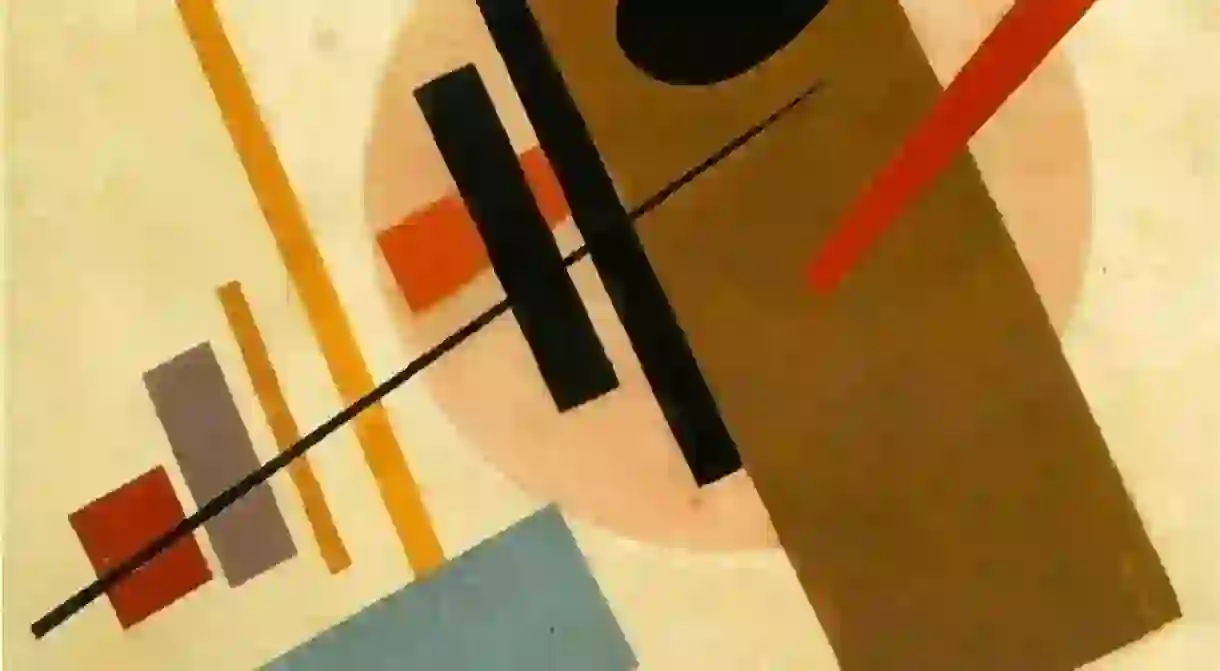How the Soviet Union Inspired Russian Avante-Garde

The Soviet Union and the Russian avant-garde are interwoven in many ways. Both were born out of the same social discontent and the appetite to revolutionise the status quo. Just as the political revolutionaries wanted to overhaul old imperial ways, artists strove to abandon old conventions and expand the artistic world. They also shared a similar idealism and political agenda, which pioneered a new world.
The Russian avante-garde was a revolutionary period of art that emerged during the late 19th century and early 20th. The movement was not just limited to visual artists. It encompassed filmmakers, architecture, design, as well as literary and performance practices.
Initially influenced by Cubism, the French avante-garde and the Italian Futurists, the style shared a similar desire to push boundaries and challenge the limitations of art. However, Russian artists built on this further to create a more ‘radical vocabulary’, in line with the social and political climate of the Russian Empire at the time.

Avante-garde’s early days began as the Russian Empire was coming to an end. The Romanov Dynasty had had around 300 years of rule and entitlement and WWI further shook societal fault lines, widening the gap between the privileged and the poor.
Although the movement was already underway by 1890, avant-garde’s heyday was between 1912 and 1934, through the upheaval of the Russian Revolution and the idealistic early days of the Soviet Union. This was a time when artists were driven by sociopolitical agendas and both political figures and artists were fuelled by big ideas and grand aspirations.
In parallel with the emergent socialist rhetoric that was searching for a new social strucutre, avante-garde artists were fed up with artistic tradition and were looking for ways to impact society through their work and contribute to the goals of the revolution through their creative practices.

And so the functionality of art began to be considered and the seed of art for political purpose was planted. Artworks could serve a purpose and have aesthetic value. As the Revolution kicked off, artists such as El Lissitzky began to design red propaganda posters and Popova created uniforms and textiles for workers. Everyday objects became sculptural, and visual arts were an opportunity to express alliance to the Bolsheviks and the Socialists. Artists began to fill their canvases with new symbols denoting workers and peasants. They used geometric shapes, abstract composition and restrained colour schemes, which would go on to be some of the defining stylistic features of the era.
The intersection and influence of Soviet ideals and art is most clear in constructivism, one of the creative arms of the avante-garde, which still remains iconic to the Soviet Union today. Key constructivist principles were that art could be functional, conceptually bold and serve the collective society. It rejected art for ornamental function alone. Keeping in line with the industrial advances of early Sovietism, constructivists believed art should directly reflect the new industrial world and strive for social change.
Just like the Soviet Union, the Russian avante-garde embraced the new, industrialised world. The groundbreaking documentary Man with a Movie Camera, byDziga Vertov, married experimental film techniques to the day-to-day life of a Soviet worker. In doing so, it celebrated the Union’s industrial achievements and redefined cinematic visual language.

The movement came to an end in the mid-1930s, when Stalin decreed Socialist Realism to be the only State-approved artistic style. He went on to label the avant-garde as bourgeois and therefore no longer in line with the regime’s agenda. Despite this, the Russian avante-garde was a period of creative innovation and a conceptual overhaul of artistic function and form. It strove to break convention and embraced the new, revolutionary world they were creating, just as the Soviet Union did.













